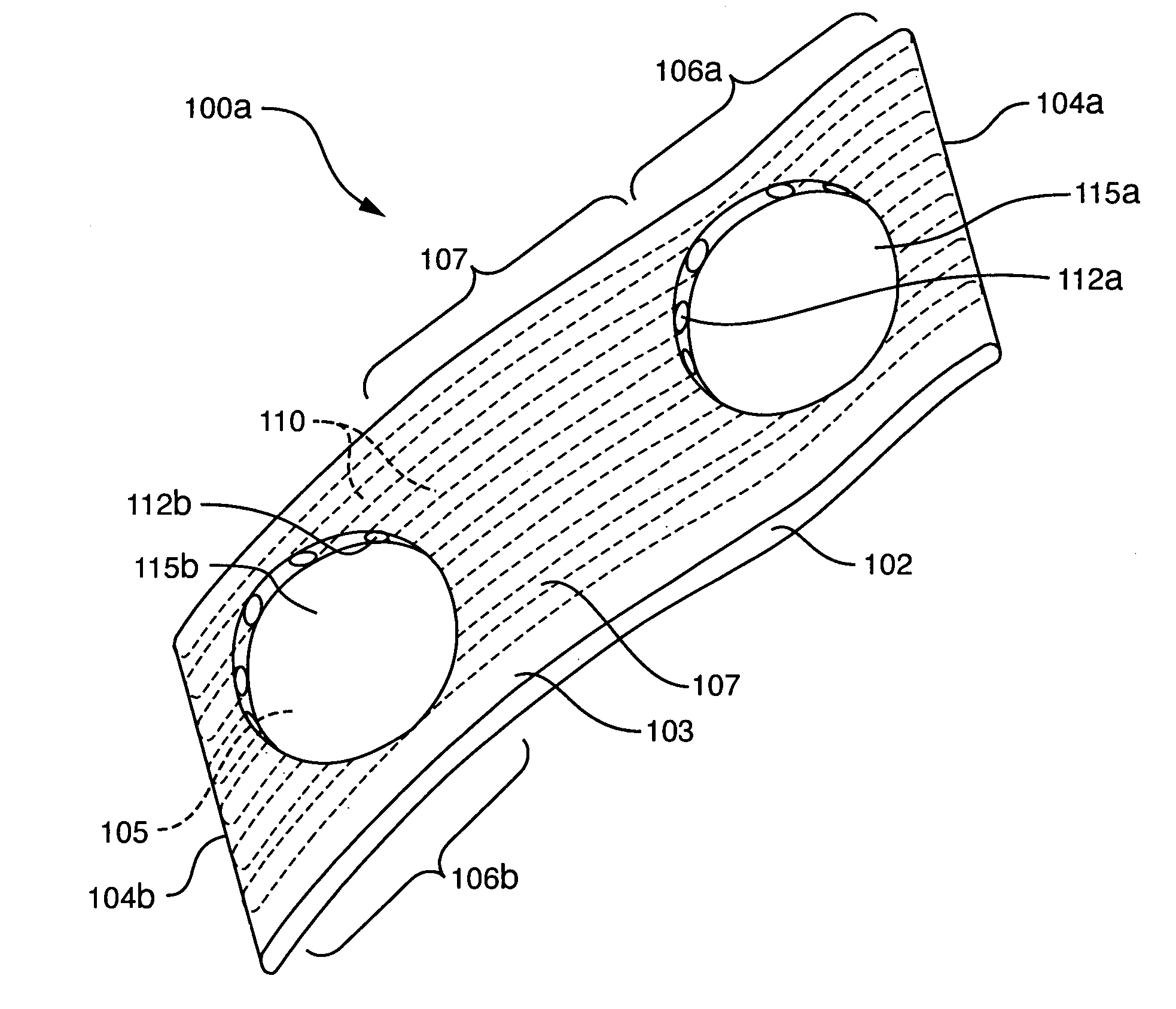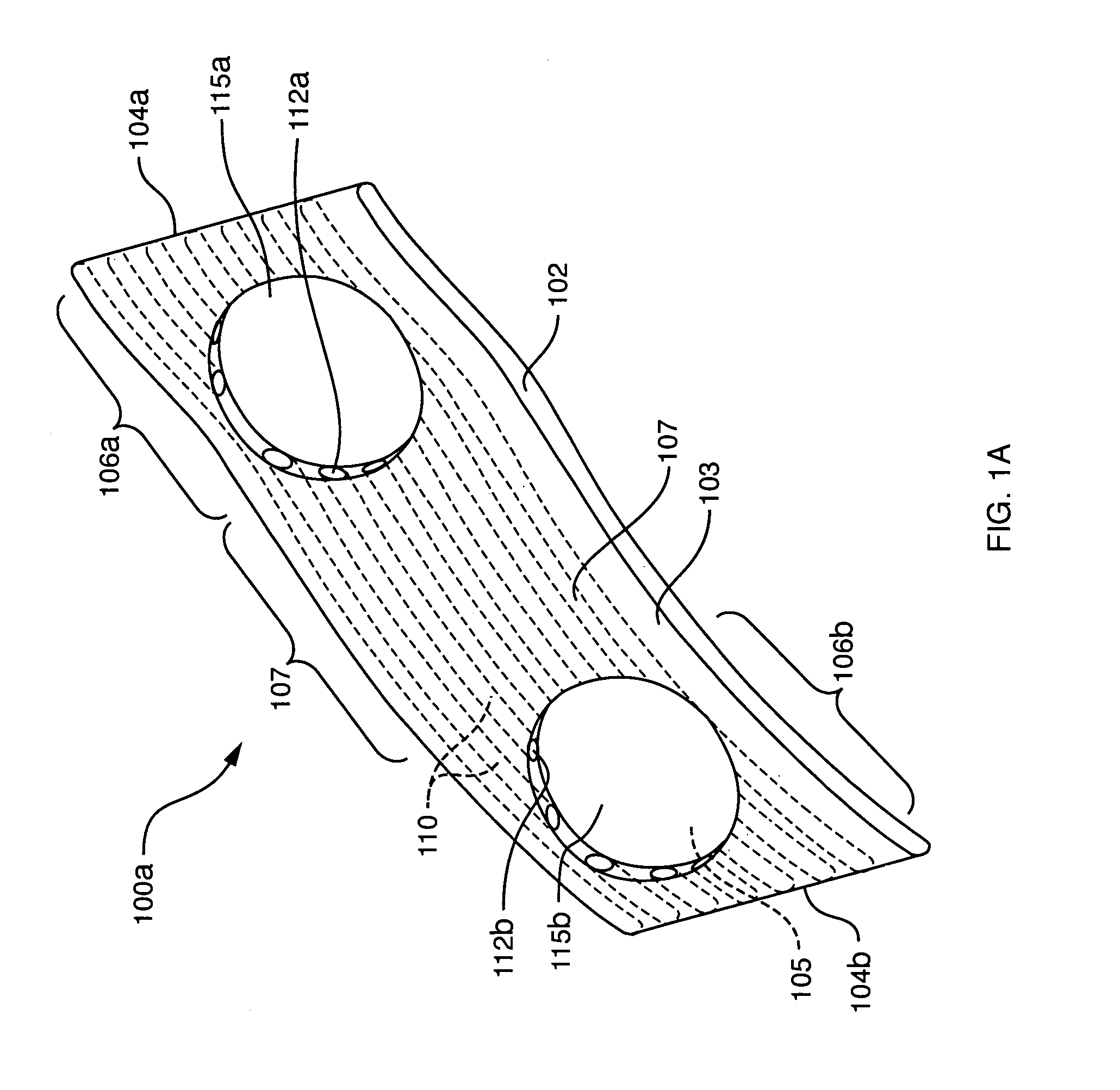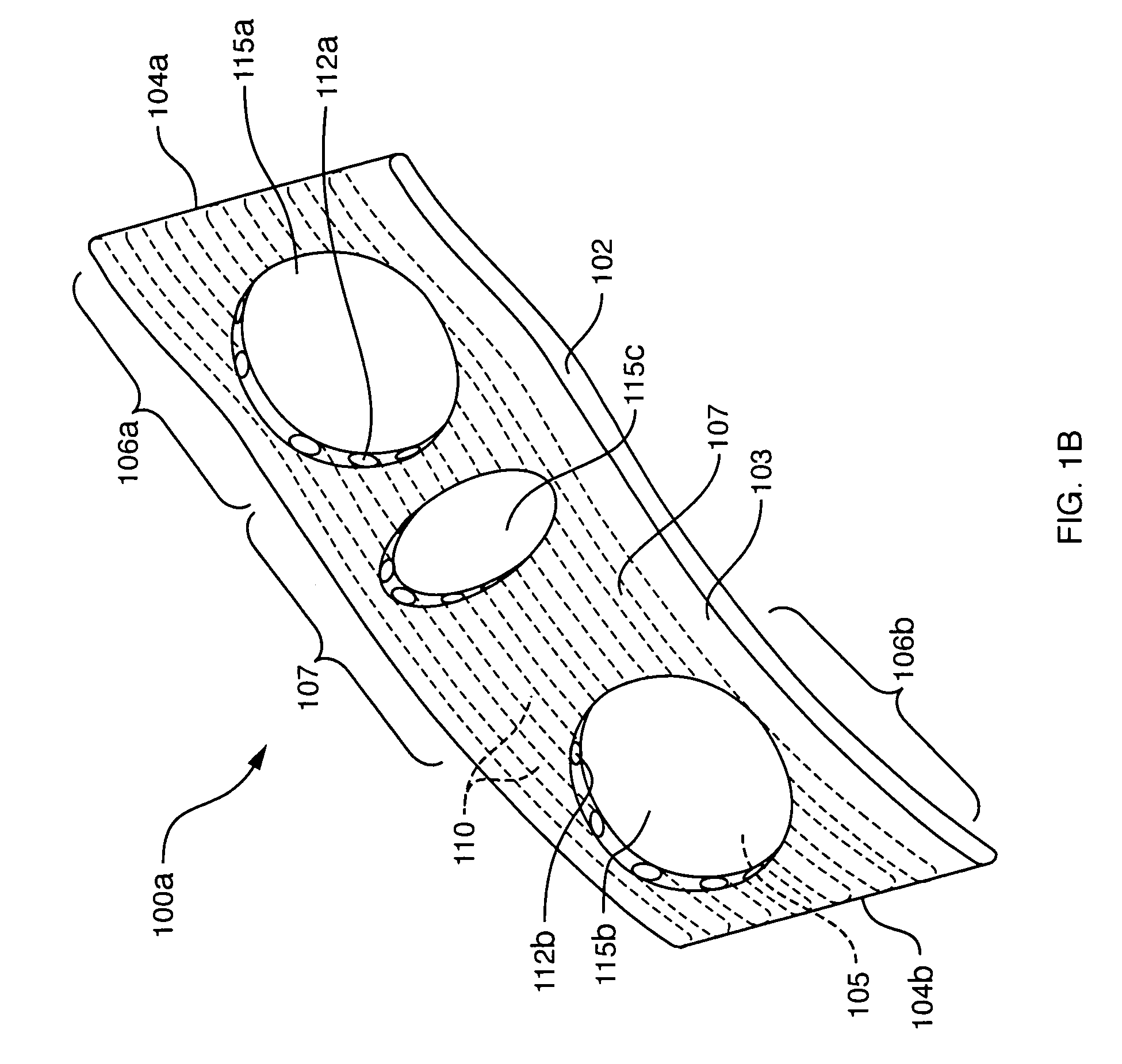Shunt for the treatment of glaucoma
a shunt and glaucoma technology, applied in the field of surgical treatment of glaucoma, can solve the problems of increased intraocular pressure, progressive damage to the optic nerve, and loss of central and peripheral visual field, and achieve the effect of reducing intraocular hypertension
- Summary
- Abstract
- Description
- Claims
- Application Information
AI Technical Summary
Benefits of technology
Problems solved by technology
Method used
Image
Examples
Embodiment Construction
[0054]One embodiment of the present invention comprises a thin planar shunt device that can have various shapes and configurations as depicted in FIGS. 1 through 6. Various embodiments of the shunts are adapted to cooperate with the introducer or delivery apparatus used to facilitate placement of the shunt into the patient's eye.
[0055]Referring to FIG. 1, one embodiment of a shunt device 100A comprises a thin planar body 102 that extends along a longitudinal axis 105 from a first end section 106A to a second end section 106B with medial section 107 therebetween. The shape and configuration of the planar member, herein defined as its “planform”, is shown as being substantially rectangular with relatively straight side edges 103 and endwise edges 104A, 104B. However, other shapes and configuration are well within the scope of the invention as is readily appreciated by one skilled in the art. For example, the first end section 106A can be bulbous or pointed as illustrative examples. Li...
PUM
 Login to View More
Login to View More Abstract
Description
Claims
Application Information
 Login to View More
Login to View More - R&D
- Intellectual Property
- Life Sciences
- Materials
- Tech Scout
- Unparalleled Data Quality
- Higher Quality Content
- 60% Fewer Hallucinations
Browse by: Latest US Patents, China's latest patents, Technical Efficacy Thesaurus, Application Domain, Technology Topic, Popular Technical Reports.
© 2025 PatSnap. All rights reserved.Legal|Privacy policy|Modern Slavery Act Transparency Statement|Sitemap|About US| Contact US: help@patsnap.com



